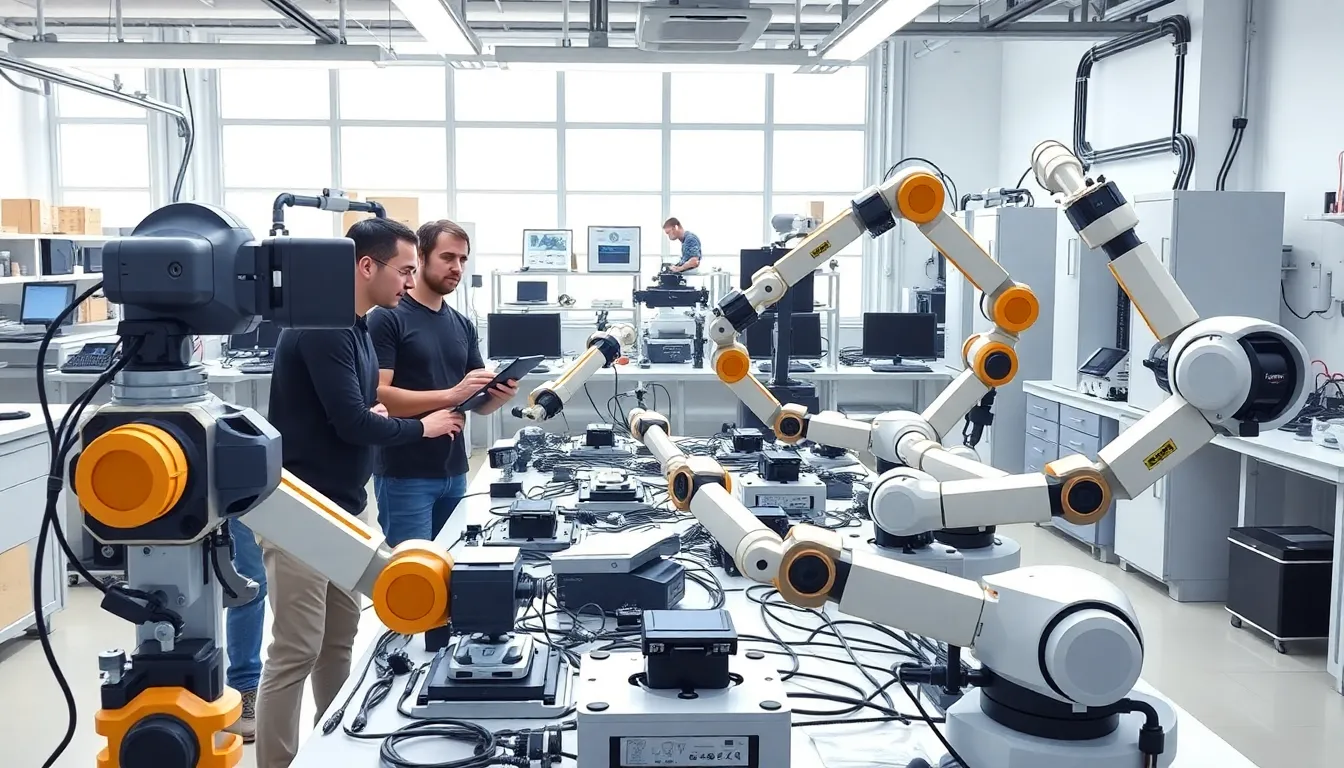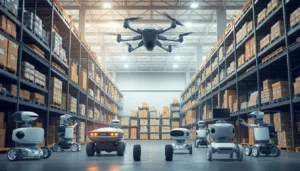In a world where robots are no longer just the stuff of sci-fi movies, the best robotics companies are leading the charge into a future filled with innovation and automation. From quirky household helpers to sophisticated industrial machines, these companies are redefining what it means to be a robot. They’re not just building gadgets; they’re crafting the future, one algorithm at a time.
Table of Contents
ToggleOverview of Robotics Industry
The robotics industry encompasses a wide range of technologies and applications. Companies innovate in various sectors, including manufacturing, healthcare, and consumer electronics. An increasing number of industries are adopting automation to enhance efficiency and productivity.
Market research reports indicate that the global robotics market is expected to reach USD 149 billion by 2025. Significant growth stems from advancements in artificial intelligence, machine learning, and sensor technology. These developments enable robots to perform complex tasks with greater precision.
Manufacturing remains a primary sector for robotics. Industrial robots streamline production processes and improve product quality. Examples include robotic arms used for assembly, welding, and packaging. These machines reduce human error and increase operational speed.
Healthcare applications of robotics are expanding rapidly. Surgical robots assist surgeons in performing intricate procedures, enhancing accuracy and reducing recovery times. Rehabilitation robots help patients regain mobility, improving their quality of life. Robotics companies focus on designing systems that work seamlessly with medical professionals.
In consumer markets, household robots are gaining popularity. Vacuum cleaning robots offer convenience to users by automating routine cleaning tasks. Companion robots assist the elderly or individuals with disabilities, providing companionship and support. Companies prioritize user-friendly designs and enhanced features in these products.
Globally, various regions contribute to the robotics industry. North America leads in technology development and investment. Europe emphasizes robotics in manufacturing and healthcare applications. Asia-Pacific exhibits strong growth, driven by increased demand for automation in manufacturing and logistics.
These trends illustrate a vibrant and evolving robotics industry. The advancements across sectors highlight the importance of innovation and investment in this transformative field. Companies strive to push the boundaries of what robots can achieve, shaping the future landscape of technology and automation.
Criteria for Evaluation

Evaluating robotics companies involves several critical factors that reflect their impact and standing in the industry.
Innovation and Technology
Innovation plays a pivotal role in assessing robotics companies. Cutting-edge advancements in artificial intelligence, machine learning, and sensor technology distinguish leaders in the field. Companies investing heavily in research and development often create more effective solutions. Patents and publications also indicate a commitment to innovation. Notably, companies that introduce breakthrough technologies tend to receive attention from investors and consumers alike.
Market Impact
Market impact encompasses a company’s reach and revenue generation within various sectors. The global robotics market, projected to reach USD 149 billion by 2025, highlights significant opportunities for growth. Firms that capture large market shares often demonstrate particular strengths in manufacturing and automation. Contributions to sectors like healthcare and consumer electronics significantly enhance their standing. Competitive positioning within regional markets, such as North America’s focus on advanced technology, influences overall evaluation.
Customer Satisfaction
Customer satisfaction serves as a vital criterion for evaluating robotics companies. Survey data and user reviews provide insight into how products meet consumer needs. Companies excelling in user experience often maintain a loyal customer base. High-quality customer support and consistent product performance contribute to favorable ratings. Companies with strong reputations typically enjoy repeat business and referrals, which are essential for long-term success.
Top Robotics Companies
Numerous companies innovate and shape the robotics landscape, each contributing significantly to various sectors. These industry leaders showcase unique achievements and advancements in robotics technology.
Company 1: Overview and Achievements
Boston Dynamics exemplifies excellence in robotics with its advanced dynamics in movement. The company gained recognition for the development of agile robots like Spot and Atlas, known for their ability to navigate complex environments. Achievements include contracts with multiple industries, enhancing automation in manufacturing and logistics. Intriguingly, Spot’s use in construction and inspection has garnered substantial attention for its versatility and effectiveness. Boston Dynamics continues to push the boundaries of robotics with ongoing research and development.
Company 2: Overview and Achievements
ABB Robotics stands at the forefront of automation technology, specializing in industrial robots and digital solutions. This company leads the field with innovations in robotic arms, helping manufacturers improve production efficiency. Particular successes involve collaboration with various industries, from automotive to electronics, where ABB’s solutions have reduced operational costs significantly. Furthermore, the company’s investments in artificial intelligence and machine learning technologies elevate its standing among competitors.
Company 3: Overview and Achievements
Kuka Robotics demonstrates a robust commitment to industrial automation through its comprehensive robot lineup. Notable accomplishments include pioneering work in automation for industries such as automotive manufacturing and healthcare. The flexibility of Kuka’s robots allows seamless integration into assembly lines, enhancing productivity. Collaborations with global manufacturers underscore Kuka’s influential role in advancing robotics solutions. Continued innovation keeps Kuka positioned as a leader in the evolving field of robotics.
Future Trends in Robotics
Robotics continues to evolve rapidly, driven by advancements in various technologies. Increased integration of artificial intelligence enhances robotic capabilities, enabling machines to learn and adapt in real-time. Automation trends indicate that the global robotics market is on a trajectory to reach USD 149 billion by 2025. This growth correlates directly with applications in manufacturing, healthcare, and consumer electronics.
Applications of robotics are diversifying, with surgical robots improving patient treatment efficiency and household assistants like vacuum cleaners gaining traction among consumers. Companies are investing heavily in research and development, which leads to faster technological breakthroughs. Collaborations between tech firms and industry leaders create innovative solutions that address complex challenges in various sectors.
Digital solutions are transforming industries, with ABB Robotics leading the push toward increased production efficiency. Kuka Robotics emphasizes seamless automation integration, particularly in the automotive sector. Boston Dynamics stands out with versatile robots capable of navigating intricate environments, impacting industries such as construction and inspection.
Regional dynamics shape the robotics landscape as well. North America leads in technology development, while Europe excels in manufacturing applications. The Asia-Pacific region shows strong demand for automation, indicating a shift toward robotics across diverse economies. Customer experience remains key, with companies that prioritize user satisfaction developing loyal bases and solid reputations.
These trends spotlight the importance of innovation and ongoing investments, as they influence the future trajectory of the robotics industry.
The robotics industry is on the brink of a transformative era driven by innovation and technological advancements. Leading companies are not only redefining automation but also enhancing everyday life through diverse applications. As the market continues to expand and evolve, these firms will play a crucial role in shaping the future landscape of robotics.
Investments in research and development will remain pivotal in fostering breakthroughs that enhance functionality and efficiency. With a focus on customer satisfaction and market impact, the best robotics companies are well-positioned to lead the charge in this exciting field. As they push the boundaries of what’s possible, the potential for robotics to revolutionize various sectors is truly limitless.










